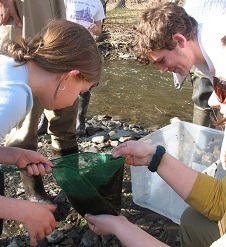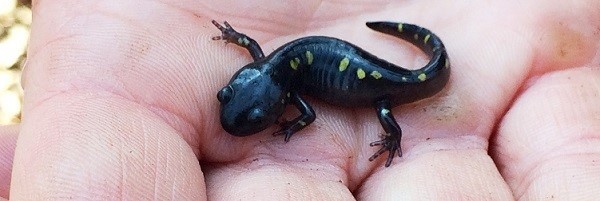Earth Day Every Day: Caring for the Hudson We Share; Eel Count April 21 at Fall Kill Creek; Nature Notes
The New York State Department of Environmental Conservation sent this bulletin on 04/17/2018 01:46 PM EDT |
| DEC Delivers - Information to keep you connected and informed from the NYS Department of Environmental Conservation |
| Share or view as a web page || Update preferences or unsubscribe |
 |
Hudson RiverNet
|
|
Check out these family-friendly Earth Week events with DEC Caring for the Lands and Waters of the Hudson River Estuary Watershed
Find out about a special event (below) hosted by the Hudson River Estuary Program and the Hudson River National Estuarine Research Reserve for Earth Week. In this issue we offer a new feature, Nature Notes, observations from staff and individuals who delight in the diversity of nature in the Hudson Valley. Eel Count in Poughkeepsie for World Fish Migration Day
The Hudson River estuary is home to more than 220 species of fish, including several species such as herring, shad, sturgeon, and eels that migrate from the Atlantic Ocean into the river and its tributaries to spawn each spring. Now in its 11th year, the Hudson River juvenile American eel program takes place from early March until May at 10 sites from Staten Island to New Baltimore. Citizen scientists—students, teachers, college interns, and community volunteers—check nets and eel ‘mops’ daily throughout the season, helping guide the conservation of this fish.
Nature NotesVolunteers have been helping amphibians on their seasonal breeding journeys -- so what's next? There is promising evidence that many salamanders and frogs have successfully arrived at woodland pools, if we look and listen. In late February, the chorus of male wood frogs started, and continued in fits and starts through March, along with lower-than-average temperatures and four'easters which kept amphibian-enthusiasts wondering. But there are now wood frog egg masses, along with salamander egg masses and spermatophores in many pools. Later this month and in May, we will begin to see wood frog tadpoles and salamander larvae. Is the migration over? Depending on where you live, there may still be new (or late) arrivals to woodland pools, as well as amphibians that need to return to the forest, now that their courtship and egg-laying are complete. There are warm and rainy days in the forecast, so we may yet see migrating amphibians. Laura Heady, Conservation and Land Use Program Coordinator, Hudson River Estuary Program/Cornell University. Photo of tiny spotted salamander by A. Kletter. Subscribe to the Hudson River Almanac, a weekly natural history journal of individuals observations from the High Peaks of the Adirondacks to New York Harbor.
|

 During one week in April, we pay special attention to our Hudson River Valley environment: the tidal Hudson, local streams, woodlands, parks, waterfronts, and tidal marshes. However, the work of caring for the land and waters around us is a daily effort. Environmental organizations, research institutions, colleges and universities, watershed groups, local officials, and community volunteers all help to conserve, restore, and protect these special places. Read
During one week in April, we pay special attention to our Hudson River Valley environment: the tidal Hudson, local streams, woodlands, parks, waterfronts, and tidal marshes. However, the work of caring for the land and waters around us is a daily effort. Environmental organizations, research institutions, colleges and universities, watershed groups, local officials, and community volunteers all help to conserve, restore, and protect these special places. Read  Curious about eels? Join us on Saturday, April 21st and watch DEC educators count, weigh, and then release baby ‘glass’ eels upstream. The eel count will take place at 12 noon on the Fall Kill creek between the Mid-Hudson Children’s Museum and Upper Landing Park, which can be accessed by taking the elevator from the Walkway over the Hudson. This eel count is part of
Curious about eels? Join us on Saturday, April 21st and watch DEC educators count, weigh, and then release baby ‘glass’ eels upstream. The eel count will take place at 12 noon on the Fall Kill creek between the Mid-Hudson Children’s Museum and Upper Landing Park, which can be accessed by taking the elevator from the Walkway over the Hudson. This eel count is part of 